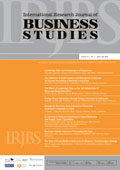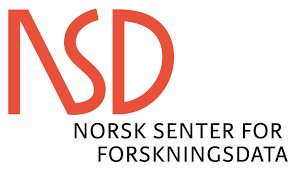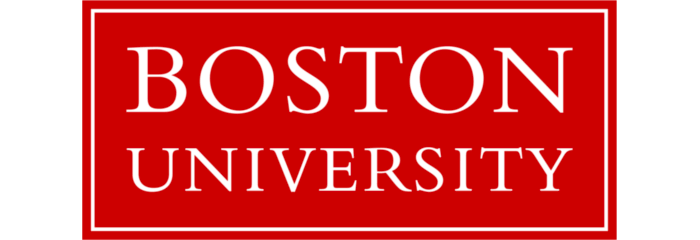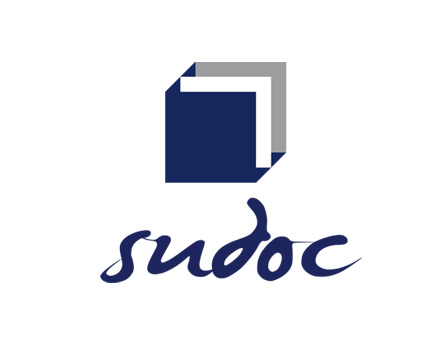Article Metrics |
|
|
How Innovativeness Influence on Women Business Performance
Abstract
Keywords
Full Text:
References
Akgün, A. E., Ince, H., Imamoglu, S. Z., Keskin, H., & Kocoglu, İ. (2013). The mediator role of learning capability and business innovativeness between total quality management and financial performance. International Journal of Production Research, 52(3), 888-901. doi:10.1080/00207543.2013.843796
Birley, S., & Westhead, P. (1990). Growth and performance contrasts between “types” of small firms. Strategic Management Journal, 11(7), 535–557
BPS Kota Semarang. (2021). Kota Semarang dalam Infografis: Badan Pusat Statistik.
Boso, N., Story, V. M., Cadogan, J. W., Micevski, M., & Kadic-Maglajlic, S. (2013). Firm innovativeness and export performance: Environmental, networking, and structural contingencies. Journal of International Marketing, 21(4), 62–87
Brush, C. G., De Bruin, A., Gatewood, E. J., & Henry, C. (Eds.). (2010). Women entrepreneurs and the global environment for growth: a research perspective. : Edward Elgar Publishing.
Chatterjee, N., Das, N., & Srivastava, N. K. (2019). A structural model assessing key factors affecting women’s entrepreneurial success. Journal of Entrepreneurship in Emerging Economies, 11(1), 122-151. doi:10.1108/jeee-08-2016-0030
Crossan, M. M., & Apaydin, M. (2010). A Multi-Dimensional Framework of Organizational Innovation: A Systematic Review of the Literature. Journal of Management Studies, 47(6), 1154-1191. doi:10.1111/j.1467-6486.2009.00880.x
Efrat, K., Hughes, P., Nemkova, E., Souchon, A. L., & Sy-Changco, J. (2018). Leveraging of Dynamic export capabilities for competitive advantage and performance consequences: Evidence from China. Journal of Business Research, 84, 114-124. doi:10.1016/j.jbusres.2017.11.018
Eidizadeh, R., Salehzadeh, R., & Chitsaz Esfahani, A. (2017). Analysing the role of business intelligence, knowledge sharing and organisational innovation on gaining competitive advantage. Journal of Workplace Learning, 29(4), 250-267. doi:10.1108/jwl-07-2016-0070
Ejrami, M., Salehi, N., & Ahmadian, S. (2016). The Effect of Marketing Capabilities on Competitive Advantage and Performance with Moderating Role of Risk Management in Importation Companies. Procedia Economics and Finance, 36, 22-28. doi:10.1016/s2212-5671(16)30012-0
Elam, A. B. B., Candida G.; Greene, Patricia G; Baumer, Benjamin; Dean, Monica; Heavlow, René (2019). Global Entrepreneurship Monitor: 2018/2019 Women’s Entrepreneurship Report: Global Entrepreneurship Research Association, London Business School.
Ferraresi, A. A., Quandt, C. O., dos Santos, S. A., & Frega, J. R. (2012). Knowledge management and strategic orientation: leveraging innovativeness and performance. Journal of Knowledge Management, 16(5), 688-701. doi:10.1108/13673271211262754
Fisher, R., Maritz, A., & Lobo, A. (2014a). Evaluating entrepreneurs’ perception of success. International Journal of Entrepreneurial Behavior & Research, 20(5), 478-492. doi:10.1108/ijebr-10-2013-0157
Fisher, R., Merlot, E., & Johnson, L. W. (2018). The obsessive and harmonious nature of entrepreneurial passion. International Journal of Entrepreneurial Behavior & Research, 24(1), 22-40. doi:10.1108/ijebr-01-2017-0011
Hatak, I., Kautonen, T., Fink, M., & Kansikas, J. (2016). Innovativeness and family-firm performance: The moderating effect of family commitment. Technological Forecasting and Social Change, 102, 120-131. doi:10.1016/j.techfore.2015.02.020
Jalilvand, M. R. (2017). The effect of innovativeness and customer-oriented systems on performance in the hotel industry of Iran. Journal of Science and Technology Policy Management, 8(1), 43-61. doi:10.1108/jstpm-08-2016-0018
Jiménez-Jiménez, D., & Sanz-Valle, R. (2011). Innovation, organizational learning, and performance. Journal of Business Research, 64(4), 408-417. doi:10.1016/j.jbusres.2010.09.010
Kallmuenzer, A., Strobl, A., & Peters, M. (2017). Tweaking the entrepreneurial orientation–performance relationship in family firms: the effect of control mechanisms and family-related goals. Review of Managerial Science, 12(4), 855-883. doi:10.1007/s11846-017-0231-6
Kampai, S. J. (2018). Jokowi: Kita Butuh Lebih Banyak Pengusaha Wanita. Retrieved from https://finance.detik.com/berita-ekonomi-bisnis/d-4247677/jokowi-kita-butuh-lebih-banyak-pengusaha-wanita
Kamukama, N., Kyomuhangi, D. S., Akisimire, R., & Orobia, L. A. (2017). Competitive advantage: mediator of managerial competence and financial performance of commercial banks in Uganda. African Journal of Economic and Management Studies, 8(2), 221-234. doi:10.1108/ajems-10-2016-0142
Laforet, S. (2011). A framework of organisational innovation and outcomes in SMEs. International Journal of Entrepreneurial Behavior & Research, 17(4), 380-408. doi:10.1108/13552551111139638
Leonidou, L. C., Leonidou, C.N., Fotiadis, T.A., Zeriti, A. (2013). Resources and capabilities as drivers of hotel environmental marketing strategy: implications for competitive advantage and performance. Tour. Manage, 35, 94-110.
Li, Y., Zhou, N., & Si, Y. (2010). Exploratory innovation, exploitative innovation, and performance. Nankai Business Review International, 1(3), 297-316. doi:10.1108/20408741011069223
Liu, C.-H. (2017). Creating competitive advantage: Linking perspectives of organizationlearning, innovation behavior and intellectual Capital. International Journal of Hospitality Management, 66, 13-23. doi:10.1016/j.ijhm.2017.06.013
Mamun, A. A., Nawi, N. B. C., Permarupan, P. Y., & Muniady, R. (2018). Sources of competitive advantage for Malaysian micro-enterprises. Journal of Entrepreneurship in Emerging Economies, 10(2), 191-216. doi:10.1108/jeee-05-2017-0037
Micheels, E. T., & Gow, H. R. (2015). The effect of market orientation on learning, innovativeness, and performance in primary agriculture. Canadian Journal of Agricultural Economics/Revue canadienne d'agroeconomie, 63(2), 209-233.
Murray, J. Y., Gao, G. Y., & Kotabe, M. (2010). Market orientation and performance of export ventures: the process through marketing capabilities and competitive advantages. Journal of the Academy of Marketing Science, 39(2), 252-269. doi:10.1007/s11747-010-0195-4
Ong, J. W., Ismail, H., & Yeap, P. F. (2018). Competitive advantage and firm performance: the moderating effect of industry forces. I. International Journal of Business Performance Management,, 19(4), 385-407.
Pereira-Moliner, J., Font, X., Tarí, J. J., Molina-Azorin, J. F., Lopez-Gamero, M. D., & Pertusa-Ortega, E. M. (2015). The Holy Grail. International Journal of Contemporary Hospitality Management, 27(5), 714-738. doi:10.1108/ijchm-12-2013-0559
Powell, G. N., & Eddleston, K. A. (2013). Linking family-to-business enrichment and support to entrepreneurial success: Do female and male entrepreneurs experience different outcomes? Journal of Business Venturing, 28(2), 261-280. doi:10.1016/j.jbusvent.2012.02.007
Rahman, N. A. A., & Ramli, A. (2014). Entrepreneurship Management, Competitive Advantage and Firm Performances in the Craft Industry: Concepts and Framework. Procedia - Social and Behavioral Sciences, 145, 129-137. doi:10.1016/j.sbspro.2014.06.019
Rajapathirana, R. J., & Hui, Y. (2018). Relationship between innovation capability, innovation type, and firm performance. Journal of Innovation & Knowledge, 3(1), 44–55
Rhee, J., Park, T., & Lee, D. H. (2010). Drivers of innovativeness and performance for innovative SMEs in South Korea: Mediation of learning orientation. Technovation, 30(1), 65-75. doi:10.1016/j.technovation.2009.04.008
Rosenbusch, N., Brinckmann, J., & Bausch, A. (2011). Is Innovation Always Beneficial? A Meta-Analysis of the Relationship Between Innovation and Performance in SMEs (Vol. 26).
Rossi, C., Cricelli, L., Grimaldi, M., Greco, M. (2016). The strategic assessment of intellectual capital assets: an application within Terradue Srl. J. Bus. Res.h, 69(5), 1598–1603.
Rua, O., França, A., & Fernández Ortiz, R. (2018). Key drivers of SMEs export performance: the mediating effect of competitive advantage. Journal of Knowledge Management, 22(2), 257-279. doi:10.1108/jkm-07-2017-0267
Sidharta, H., Ismail, N. A., Suryasaputra, R., & Rahman, S. A. (2017). Framework Enterpreneurial Success for Young Entrepreneur. Journal of Applied Management and Entrepreneurship, 4, 553-562. doi:10.21776/ub.jam2017.015
Sigalas, C., Pekka Economou, V., & B. Georgopoulos, N. (2013). Developing a measure of competitive advantage. Journal of Strategy and Management, 6(4), 320-342. doi:10.1108/jsma-03-2013-0015
Švárová, M., & Vrchota, J. (2014). Influence of Competitive Advantage on Formulation Business Strategy. Procedia Economics and Finance, 12, 687-694. doi:10.1016/s2212-5671(14)00394-3
Tu, C., Hwang, S.-N., & Wong, J.-Y. (2014). How does cooperation affect innovation in micro-enterprises? Management Decision, 52(8), 1390-1409. doi:10.1108/md-07-2013-0388
Vij, S. B., Harpreet Singh. (2016). Effect of Organisational and Environmental Factors on Innovativeness and Business Performance Relationship. International Journal of Innovation Management, 20(03). doi:10.1142/s1363919616500377
Yadav, M. P. (2017). Model of Entrepreneurial Success: A Review and Research Agenda Journal of Advanced Academic Research, 2(1), 40-58. https://doi.org/10.3126/jaar.v3122i3121.16596.
Yıldız, S., Baştürk, F., & Boz, İ. T. (2014). The Effect of Leadership and Innovativeness on Business Performance. Procedia - Social and Behavioral Sciences, 150, 785-793. doi:10.1016/j.sbspro.2014.09.064
Zhang, X., Ma, X., & Wang, Y. (2012). Entrepreneurial orientation, social capital, and the internationalization of SMES: Evidence from China. Thunderbird International Business Review, 54(2), 195–210
Zaridis, A. D. (2016). The Relation Between Entrepreneur‟s Characteristics and Competitive Advantage. A Roadmap to SME‟s Success. International Journal of Emerging Research in Management &Technology, 5(9).
Zeng, S., Gonzalez, J., & Lobato, C. (2015). The effect of organizational learning and Web 2.0 on innovation. Management Decision, 53(9), 2060-2072. doi:10.1108/md-06-2014-0388
Copyright (c) 2022 Eviatiwi Kusumaningtyas Sugiyanto, Ratna Wijayanti

This work is licensed under a Creative Commons Attribution-ShareAlike 4.0 International License.
International Research Journal of Business Studies has been covered by the following services: | ||||||||||||||||||||||||
|



















